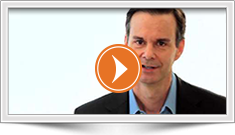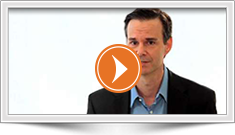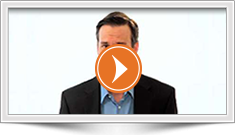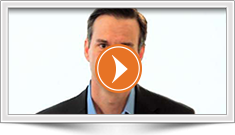1

New Venture
2

Early Growth
3

Rapid Growth
4

Continuous Growth
Find a Viable Business Model
- The business idea or concept is unproven.
- The company is learning and experimenting, in search of “what works,” and may change its business model multiple times.
- Focused simultaneously on developing a product and finding a market.
- Operates at a rapid pace and faces tremendous pressure to succeed quickly.
- Needs to make fast decisions, iterate quickly, and make changes when needed.
- Decision making is highly centralized.
- The founders are at the center of everything and are directly accessible by all employees.
- Typically employ a small and dedicated group of employees who share the founder’s vision.
- No formal management structure because of the limited number of employees.
- There is a great deal of uncertainty; there is almost daily change and nothing ever goes as expected.
- Has few systems or policies and operates informally with a lot of improvisation.
- Very little active planning or need for planning.
- Sales serve to measure market acceptance.
- Communication is informal and frequent.
- Nothing is written in stone, and there is a high degree of flexibility.
Create Customers & Drive Sales
- The company begins this stage with a basic product, some revenues, and a few initial customers.
- Broader market acceptance is unproven; it lacks scale; and its infrastructure is not developed.
- Product development and customer development is taken to the next level.
- The business is primarily focused on revenue growth. Almost all of the energy of the business is directed toward acquiring and satisfying more and more new customers.
- In an early phase of building a formal management structure. Teams are small, loyal and cohesive.
- Fast-paced, highly flexible, and often very chaotic. Able to turn on a dime with constantly shifting priorities.
- A lot of improvisation and a freewheeling management style.
- Action oriented and driven by attaining results.
- Everyone is expected to do whatever it takes to meet customer demands. High levels of initiative are rewarded.
- Ambiguity and imprecision are always present.
- The business operates in a relatively simple environment.
- Decision making is highly centralized. Hands-on leadership – the owner/founder is involved in every major decision and activity.
- Very minimal systems and processes are in place. The systems and processes that exist are often improvised on the fly.
- Employees are a mix of specialists and multi-talented generalists with job responsibilities that are rarely defined and rarely stay the same.
- Success isn’t yet scalable, repeatable, or sustainable. The organization reinvents the wheel every time a wheel is needed.
- Wildly optimistic attitude. Morale is high. Family like culture.
- Says “yes” to almost every opportunity and opportunity seems to be everywhere.
- Everyone is busy doing, so there is little time for planning and thinking.
Scale the Company
- The company has a proven product in a high-growth market.
- Demand for the company’s product or service is rising quickly.
- While it is no longer an early stage business, it is not yet a large company.
- Emphasis is placed on the development of the organization and operations.
- More sophisticated systems and processes are added.
- A talent-hungry organization with a lot of people being added, making recruiting, onboarding, and ongoing management more difficult.
- The company transitions to functional departments and jobs become more specialized.
- The business is focused primarily on profitability.
- Tension exists between the need to grow rapidly versus the need to build structure, plans, process, and systems.
- The sheer volume of decisions to be made has dramatically increased.
- Early success has attracted new competitors.
- There are increased expectations from all stakeholders (board, investors, employees, customers).
- Turnover may dramatically increase as the business changes during this stage.
- Management of this stage is very difficult. It is the time of the greatest organizational, operational, and mindset changes.
Become a Market Leader
- The company is succeeding on a large scale and has become or has the potential to become a market leader.
- The organization is much larger and more complex and has developed a structure that supports its increasing size.
- The business operates with precision, dependability, and efficiency.
- New growth strategies are being considered or executed: new markets, new products, new businesses, acquisitions, strategic alliances, IPO, etc.
- Changing customer needs, new technologies, and competitive threats present increasing challenges.
- The business is focused on both long-term revenue growth and short-term profitability.
- There is a balance between the systems and controls needed to effectively manage the business and the flexibility necessary for entrepreneurship and innovation.
- Entrepreneurship is a mindset and cultural component throughout the organization.
- The right people are in the right positions.
- Decisions are made at the most appropriate level of the organization and consistently implemented.
- Goals are readily set and consistently met or exceeded.
- Everyone in the organization – from top to bottom – has a strong sense of accountability towards his own responsibilities and his team’s responsibilities.
- Short-term tasks are done and done well, while simultaneously never losing sight of the big picture.
- Success is scalable, repeatable, and sustainable.
- The organization is unified and aligned around a shared vision. Everyone in the business embraces and acts on a shared mindset.
- There is minimum disruption in the way the organization deals with problems – problems are confronted head on and then the business moves on.
- Relationships between departments, employees, and managers are very strong. There is a high degree of trust, teamwork, and collaboration.
- There is a strong sense of ownership by all employees.
- The organization accepts change and adapts quickly to new challenges.
- There is an underlying focus on the company’s top priorities and goals.
- Discomfort with the status quo, enthusiasm for new challenges, penchant for long-term thinking, and flexibility.





